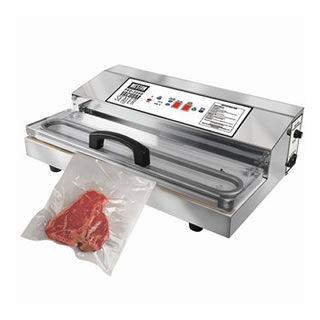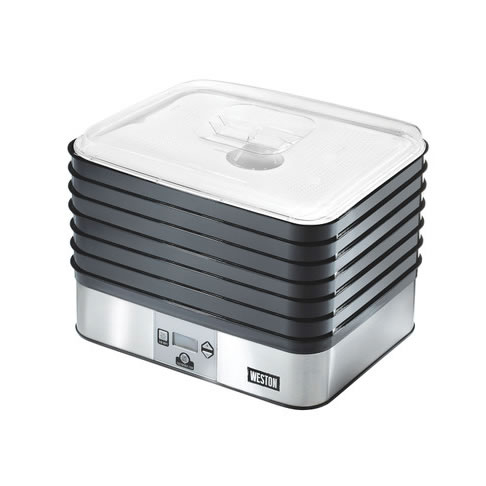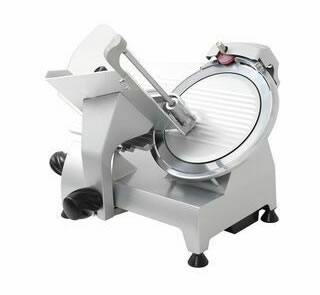How to Make Jerky in 7 Easy Steps
Before the invention of refrigeration and preservatives, the only way to preserve meat for long periods of time was to dry it into jerky. Drying meat into jerky is possibly the oldest way of preserving meat and jerky dates back to the earliest civilizations.
Traditionally, jerky was made from long, thin strips of meat that was salted and dried in the sun or over a small smokey fire. Although jerky can still be made in this way, techniques have become more sophisticated in our day. Jerky is still an extremely popular food and millions of people still enjoy jerky as a delicious, convenient, and healthy source of protein. Jerky is perfect for hikers, campers, or just an easy, non-messy snack.
Today, jerky is most commonly made from beef, but jerky can also be made from poultry, fish, and wild game such as deer (venison), elk, buffalo, bison, moose, caribou, antelope, and other game. Many varieties of seasonings can be used to make different flavors of jerky. Salt is traditionally used as the main preservative for jerky, but acids such as vinegar and citrus juice in marinades can also help to kill bacteria. Jerky can be made without salt, but its shelf life will be drastically reduced.
Store-bought jerky comes in many flavors with any number of chemicals, additives, and preservatives and can be surprisingly expensive. However, you can make your own jerky at home very easily. Most people are surprised at just how easy it is to make delicious jerky that is much cheaper and healthier than mass-produced jerky available in stores. So by making your own jerky, you not only control the ingredients, you also save money.
Jerky Making: Step-by-Step Instructions
- Select a cut of meat. Choosing a lean cut will save time later. For beef jerky, cuts like like sirloin, top round, eye of round, etc. are good choices.
- Trim all of the noticeable fat from your cut of meat because any fat will cause the jerky to spoil much faster.
- Slice your meat into very thin strips from 1/8" to 1/4" thick. Cutting the meat into thin slices dramatically shortens drying time. You can cut jerky with just a knife and cutting board, but there are some convenient tools you can use for slicing meat, such as a Jerky Slicing Tray, a Hand-Crank Jerky Slicer, or an Electric Meat Slicer.
Tip: If you are slicing meat with just a knife, you can make it easier to slice by freezing the meat for about 30 minutes before slicing. You can cut with or against the grain, but some find that strips cut against the grain are easier to chew. - Marinate the meat in a marinade or solution of your choice. This step is optional because the additional moisture can make dehydration take longer, and the resulting jerky might be stickier. Soaking in soy sauce or teriyaki sauce is a favorite. Place in the refrigerator for 4 - 24 hours to allow the meat absorb the flavor.
- Season the meat with the dry seasonings of your choice. You can follow a jerky recipe or choose from a wide variety of available jerky seasoning mixes. A mixture of salt, pepper, oregano, marjoram, basil and thyme is tasty. You will find that many seasonings work well and it is a personal preference. Many people enjoy jerky with a lot of pepper. You will need to experiment to find your favorites. It is best to pound dry seasonings into the meat for best results.
- Dehydrate Meat is dehydrated by applying heat and continuous air flow. The control of both the temperature and the airflow is very important. If the humidity is too high and the temperature is too low, the jerky will dry too slowly and it could spoil. If the temperature is too high, the jerky will cook too fast, harden on the outside but still be too moist on the inside, and once again, it could spoil.
There are two common methods for drying jerky; in a conventional oven or in a food dehydrator. Whichever method you use, be sure to leave enough room between pieces to allow air to flow around the meat. Avoid letting the meat touch if possible.
- Making Jerky in a Conventional Oven
Preheat your oven to 140 degrees. Remember you are not cooking the meat; you are simply removing the moisture. Spray all the racks you will use with a non stick cooking spray. Without this non stick spray, you will be left with jerky that cannot be removed from the racks and that will essentially be inedible. Spread the meat evenly on wire racks in the oven. You can also use metal racks other than the oven racks with a pan to make cleanup much faster, like this jerky rack and pan. We also recommend a convenient jerky hanger, which can hold over 100 strips of jerky and has its own drip pan.
Leave the oven door open slightly to permit moisture to escape. Since temperatures, humidity levels, and slice thickness will vary, there can be no set time for the process to complete. Usually jerky takes from 6 to 12 hours. Check the consistency of the jerky regularly after 6 hours until it meets your satisfaction. You might have to cut into the jerky to ensure that it is not raw inside. You want the jerky to be a deep brown or burgundy color and still be flexible. As jerky cools, it will get more stiff and brittle so you don’t want to over dry. - Making Jerky in a Food Dehydrator
Food Dehydrators are excellent for making jerky. Dehydrators are inexpensive to buy and are safer and cheaper to use than the kitchen oven. Additionally dehydrators make less of a mess and are easier to clean up.
Spray the dehydrator trays with a non-stick cooking spray before placing on the strips of meat. This keeps the meat from sticking and helps in the clean up of the trays. Season the jerky strips just as above and drain them well before placing them on the dehydrator trays.
A full dehydrator can usually process a large batch of jerky in 6 to 12 hours. Just like with drying in a conventional over, temperatures, humidity levels, and slice thickness will vary, so the drying time will vary. You will want to check the jerky regularly after 6 hours to see if its done. You want the jerky to be a deep brown or burgundy color and still be flexible. As jerky cools, it will get more stiff and brittle so you don’t want to over dry. The thicker cuts will take more time, so as the thin pieces are done, just remove them.
Tip: A rule of thumb is that 4 pounds of raw meat makes about one pound of jerky. - Making Jerky in a Conventional Oven
- Store the finished jerky in plastic bags and store in the refrigerator or freezer until ready to eat. To be safe, it's best to enjoy the fresh homemade jerky within one week of its preparation. If you make it right, it's delicious!
Tip: If you wish to store your jerky for longer, use a vacuum sealer to store the jerky in vacuum bags. Other storage methods allow exposure to oxygen and moisture, which encourages the growth of bacteria. In vacuum sealed bags, jerky can be kept for months. Vacuum sealed jerky stored in a freezer can last even longer.
Alternative: Jerky Snack Strips & Sticks
Instead of making jerky from sliced meat, a popular form of jerky is the jerky snack stick or snack strip, which is made from seasoned ground meat formed into strips or round sticks. To make this jerky snack, you first need to grind lean cuts of meat with a meat grinder. The next step is to mix the seasonings into the ground meat by hand or with a meat mixer. The seasoned ground meat can then be extruded into the snack sticks or strips using a Jerky Gun or Cannon. Finally, these jerky snacks are dehydrated on trays in a conventional oven or food dehydrator as described above.
Who knew it was so easy to make your own jerky? Enjoy!




